Mid-Continent discoveries and many technology advancements.
Oil discoveries, which began before statehood in 1907, by the mid-20th century had helped established leading major and independent petroleum companies.
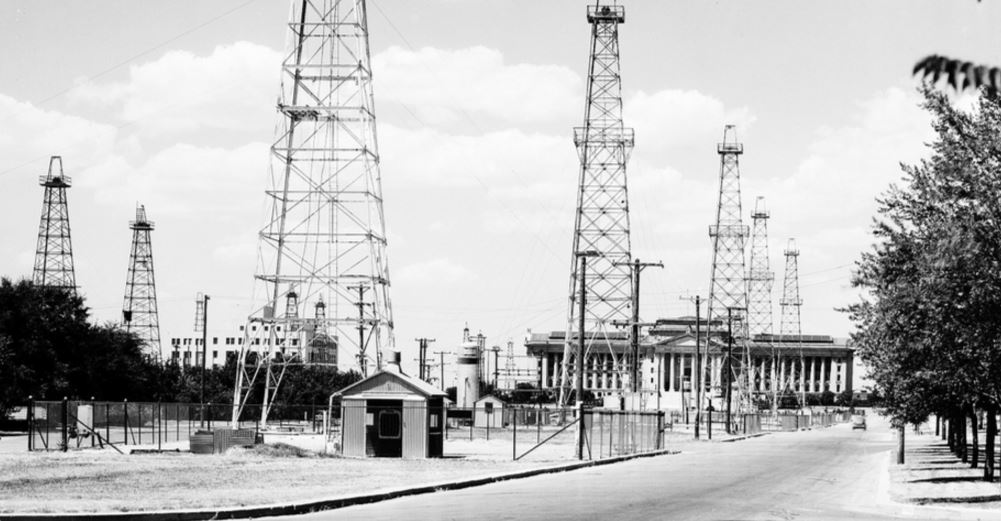
Discovered in 1928, the giant Oklahoma City oilfield added stability to the state’s economy during the Great Depression. This field alone produced more than 7.3 million barrels of oil over the next 40 years. Photo courtesy Oklahoma Historical Society.
Oklahoma’s petroleum exploration and production history began when exploration companies rushed to Indian Territory in 1897 after a column of oil erupted from a well near Bartlesville, a small town on the Caney River just south of the Kansas border.
The “wildcatters” often used steam boilers to power heavy cable tools for Making Hole – Drilling Technology. It was a technique that had evolved from using a spring pole to drill brine wells for making salt.
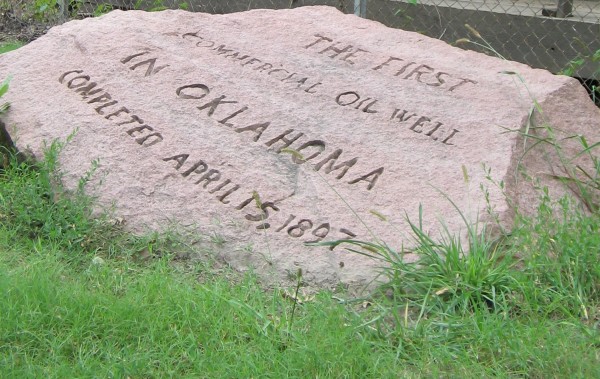
The Nellie Johnstone No. 1 well in April 1897 made Oklahoma oil history as its first discovery – and attracting hundreds of exploration companies to Bartlesville in what was then Indian Territory. Photo by Bruce Wells.
The 1897 Bartlesville oil gusher, which came a decade before statehood, was the First Oklahoma Oil Well, although some historians maintain a well drilled a decade earlier should be considered as Oklahoma’s Other First Oil Well.
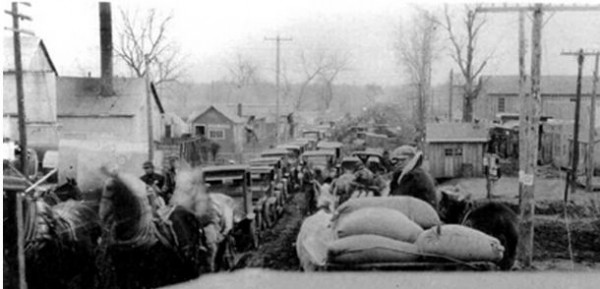
In addition to attracting exploration companies, Oklahoma’s drilling booms brought traffic jams, including this one in Seminole, Oklahoma, circa mid-1920s. Photo courtesy Oklahoma Oil Museum.
More oilfield discoveries quickly followed, each making national headlines and attracting investors seeking riches in Mid-Continent black gold.
Adding to the region’s oil fever, the 1901 Red Fork Gusher launched another historic drilling boom, soon Making Tulsa “Oil Capital of the World.”
When Missouri investors saw opportunities in the oilfields at the Kansas-Oklahoma border, they formed Cahege Oil & Gas Company. Following statehood in 1907, more major discovers made the Sooner State famous worldwide.

More than 50 refineries once operated in the Cushing area about 50 miles west of Tulsa. Pipelines and storage facilities have since made it “the pipeline crossroads of the world.” Photo from Cushing oilfield, 1910-1918, courtesy Oklahoma Historical Society.
Thomas B. Slick
In March 1912 near Cushing, the Wheeler No. 1 wildcat well produced 400 barrels a day from less than 2,350 feet deep. It marked the first of many oil gushers by an independent oilman once known as Thomas “Dry Hole” Slick.
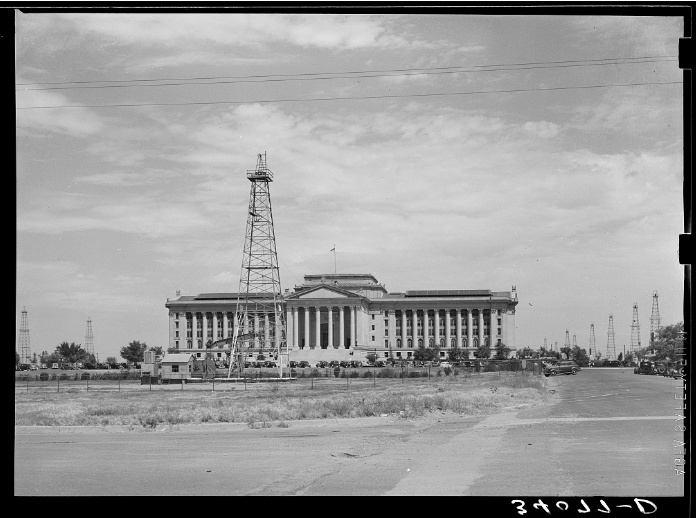
“Capitol of Oklahoma with surrounding derricks. Oklahoma City, Oklahoma,” August 1939, by Russell Lee (1903-1986) for Farm Security Administration. Photo courtesy Library of Congress.
Derricks in the Oklahoma City oilfield in 1930 stood silent for one hour in tribute to wildcatter Thomas B. Slick, who discovered Oklahoma’s giant Cushing oilfield in 1912. His drilling career include an 18-year streak discovering some of America’s most prolific oilfields, earning Slick the title of Oklahoma’s King of the Wildcatters.
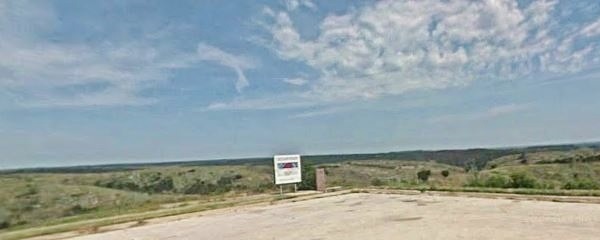
An historic marker commemorates the August 9, 1921, field testing of seismic technology. The site is located on I-35 about halfway between Oklahoma City and Dallas. Photo by Bruce Wells.
In 1915, the Bartlesville-based Cities Service Company subsidiary discovered the 34-square-mile El Dorado oilfield in Kansas.
In 1928, another subsidiary, Empire Oil & Refining, discovered the massive Oklahoma City oilfield, soon home of the headline (and news reel) making gusher, “Wild Mary Sudik.”
Thanks to a University of Oklahoma physicist, new earth-science technologies like reflection seismography began revolutionizing petroleum exploration in the 1920s. J.C. Karcher’s methods evolved from efforts to locate enemy artillery during World War I. He measured the first reflection seismograph geologic section during an experiment near Ardmore in 1921.
By the 1920s, auctions for Osage Nation mineral leases took place in the shade of a Million Dollar Elm near Pawhuska. Oil production Osage oilfields launched the careers of industry leaders like Frank Phillips, J. Paul Getty, Bill Skelly, E.W. Marland and Harry Sinclair.
South of Oklahoma City, the 1926 oilfield discovery at Seminole launched the Greater Seminole Oil Boom. More than 60 petroleum reservoirs were found in 1,300 square miles of east-central Oklahoma – and seven were giants, producing more than a million barrels of oil each.
_______________________________
The American Oil & Gas Historical Society preserves U.S. petroleum history. Become an AOGHS supporting member and help maintain this energy education website and expand historical research. For more information, contact bawells@aoghs.org. © 2024 Bruce A. Wells.
Citation Information – Article Title: “Oklahoma Oil History.” Author: Aoghs.org Editors. Website Name: American Oil & Gas Historical Society. URL: https://aoghs.org/oil-almanac/oklahoma-oil-history. Last Updated: February 15 2024. Original Published Date: March 4, 2016.


